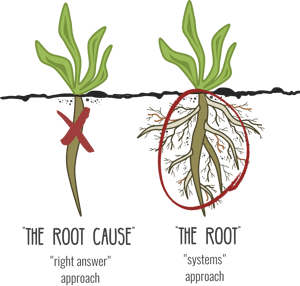Root cause analysis is an approach for identifying the underlying causes of an incident, so the most effective solutions can be identified and implemented. Unfortunately, it's often misunderstood and misapplied within organizations. Here are five elements of a good root cause analysis to make sure you and your organization are effectively using the problem-solving approach.
1. A Good Root Cause Analysis Provides a Thorough Explanation.
What is root cause analysis? If you look up the word “analysis” in the dictionary you will find a simple definition. It means “to break down into parts.” This is a simple concept: if you want to better understand anything, break it down into smaller parts. This can apply to your golf swing, which consists of a backswing, forward swing and follow-through. It can apply to any problem, such as troubleshooting an issue with your printer, explaining why you’re late on a project or even why you aren’t meeting key metrics at work. The main takeaway is that analysis is about providing a thorough explanation, and a thorough explanation is a result of breaking a problem down into smaller parts.

2. A Good Root Cause Analysis Reveals a System of Causes.
When analyzing a problem with root cause analysis, you are breaking down a problem into cause-and-effect relationships. Think of the term “root cause” as an analogy to a weed. If you want to prevent a problem from recurring (to keep weeds from growing), you must dig deeper and get to the root. It is an excellent analogy. If you only focus on the symptoms of a problem (the top of the weed), it will likely come back. While the concept is easy to understand, it is often misapplied. Many people mistakenly focus on trying to find a single, most important cause. However, this right-answer approach misses something important. A problem has multiple causes—all of which were required for the problem to occur. You’ll find the root of any problem is actually a system of causes when you break it down into parts.
3. A Good Root Cause Analysis Identifies Opportunities to Reduce Risk.
A benefit of revealing a problem’s system of causes is that it provides multiple opportunities to prevent its recurrence. Prevention is synonymous with reducing risk. When you implement a solution to a problem, you are reducing the risk of its occurrence again in the future. This concept acknowledges that you can’t guarantee or eliminate risk. Instead, there are different levels, or degrees, of solving problems. By revealing multiple causes, you are able to reveal multiple possible solutions. More possible solutions mean more opportunities to reduce risk. After all, your organization wants to implement the best solutions that reduce risk.
4. A Good Root Cause Analysis Avoids Blame and Focuses on Prevention.
By revealing multiple causes using this system approach, you are able to demonstrate that there is never one single cause to a problem—meaning, a problem isn’t one person’s fault either. Moving away from the right-answer model moves you away from the traditional blame mentality and instead, moves the focus to the breakdowns within work processes. After all, the people in your organization are critical to understanding, analyzing and solving problems. A good root cause analysis approach demonstrates to the people involved that you are interested in revealing the system of causes and their input is critical to improving results.
5. The Output of a Good Root Cause Analysis is Specific Actions That Improve Work Processes.
Now that you have driven a thorough explanation, revealing a system of causes that moves past the individual, you are able to reveal specific, actionable solutions that reduce risk. When implemented, these solutions will change how the organization executes work process going forward. Remember, problems reveal gaps within work process. A good and effective root cause analysis pinpoints these opportunities so action can be taken, not on the people, but action that changes and improves the work process.










